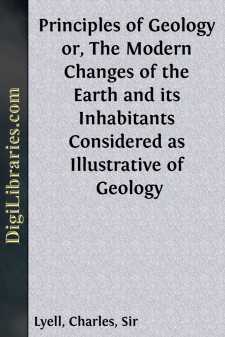Categories
- Antiques & Collectibles 13
- Architecture 36
- Art 48
- Bibles 22
- Biography & Autobiography 813
- Body, Mind & Spirit 141
- Business & Economics 28
- Children's Books 12
- Children's Fiction 9
- Computers 4
- Cooking 94
- Crafts & Hobbies 4
- Drama 346
- Education 46
- Family & Relationships 57
- Fiction 11826
- Games 19
- Gardening 17
- Health & Fitness 34
- History 1377
- House & Home 1
- Humor 147
- Juvenile Fiction 1873
- Juvenile Nonfiction 202
- Language Arts & Disciplines 88
- Law 16
- Literary Collections 686
- Literary Criticism 179
- Mathematics 13
- Medical 41
- Music 40
- Nature 179
- Non-Classifiable 1768
- Performing Arts 7
- Periodicals 1453
- Philosophy 64
- Photography 2
- Poetry 896
- Political Science 203
- Psychology 42
- Reference 154
- Religion 513
- Science 126
- Self-Help 83
- Social Science 81
- Sports & Recreation 34
- Study Aids 3
- Technology & Engineering 59
- Transportation 23
- Travel 463
- True Crime 29
A Manual of Elementary Geology or, The Ancient Changes of the Earth and its Inhabitants as Illustrated by Geological Monuments
by: Charles Lyell
Description:
Excerpt
Tracks of a Lower Silurian reptile in Canada.âIn the year 1847, Mr. Robert Abraham announced in the Montreal Gazette, of which he was editor, that the track of a freshwater tortoise had been observed on the surface of a stratum of sandstone in a quarry opened on the banks of the St. Lawrence at Beauharnais in Upper Canada. The inhabitants of the parish being perfectly familiar with the track of the amphibious mud-turtles or terrapins of their country, assured Mr. Abraham that the fossil impressions closely resembled those left by the recent species on sand or mud. Having satisfied himself of the truth of their report, he was struck with the novelty and geological interest of the phenomenon. Imagining the rock to be the lowest member of the old red sandstone, he was aware that no traces had as yet been found of a reptile in strata of such high antiquity.
He was soon informed by Mr. Logan, at that time engaged in the geological survey of Canada, that the white sandstone above Montreal was really much older than the "Old Red," or Devonian. It had in fact been ascertained many years before, by the State surveyors of New York (who called it the "Potsdam Sandstone"), to lie at the base of the whole Silurian series. As such it had been pointed out to me in 1841, in the valley of the Mohawk, by Mr. James Hall, and its position was correctly described by Mr. Emmons, on the borders of Lake Champlain, where I examined it in 1842. It has there the character of a shallow-water deposit, ripple-marked throughout a considerable thickness, and full of a species of Lingula. The flat valves of this shell, of a dark colour, are so numerous, and so arranged in horizontal layers, as to play the part of mica, causing the rock to divide into lamin?, as in some micaceous sandstones.
When I mentioned this rock in my Travels as occurring between Kingston and Montreal, (the same in which the Chelonian foot-prints have since been found,) I spoke of it as the lowest member of the Lower Silurian series; but no traces of any organic being of a higher grade than the Lingula had then been seen in it, and I called attention to the singular fact, that the oldest fossil form then known in the world, was a marine shell strictly referable to a genus now existing.
Early in the year 1851, Mr. Logan laid before the Geological Society of London a slab of this sandstone from Beauharnais, containing no less than twenty-eight foot-prints of the fore and hind feet of a quadruped, and six casts in plaster of Paris, exhibiting a continuation of the same trail. Each cast contained from twenty-six to twenty-eight impressions with a median channel equidistant from the two parallel rows of foot-prints, the one made by the feet of the right side, the other by those of the left. In these specimens a greater number of successive foot-marks belonging to one and the same series were displayed than had ever before been observed in any rock ancient or modern. Mr. Abraham has inferred that the breadth of the quadruped was from five to seven inches....



